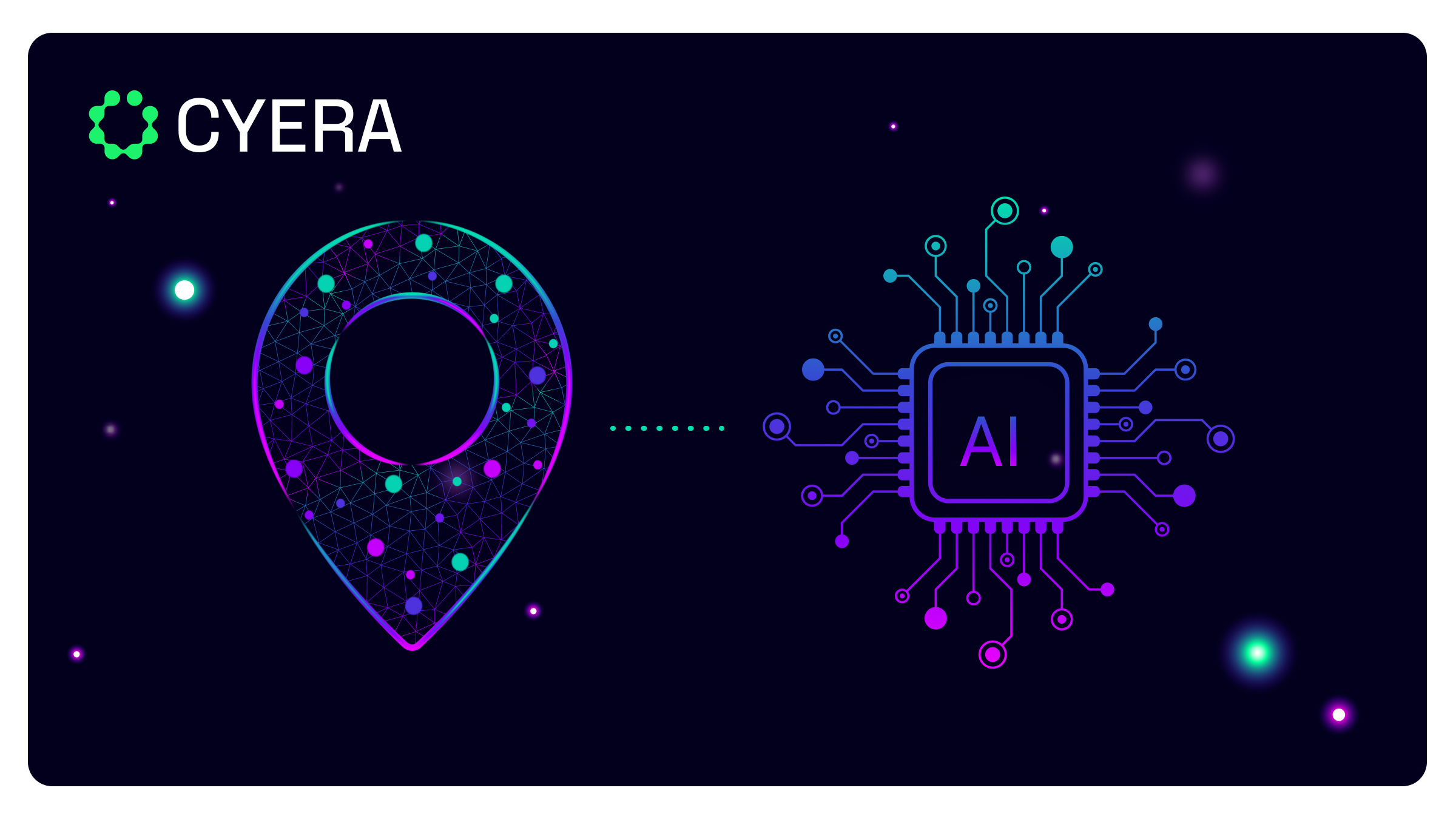Navigating the World of DSPM for AI and Why It is Mission Critical for Enterprise Organizations

AI security has become a business necessity. As more organizations use AI in their daily operations, they face growing risks around sensitive data, regulatory compliance, and model misuse.
One effective approach to quickly secure these environments is extending existing Data Security Posture Management (DSPM) systems to cover all AI workflows.
In this article, you’ll learn why DSPM for AI is so important, the core capabilities enterprises need, how solutions like Microsoft Purview are evolving to address AI security, and more.
Why DSPM for AI is Critical in 2025
According to a KPMG report, 67% of executives intend to budget for protections around AI models. This shift shows that leaders understand the new risks that come with AI systems.
Here are the main reasons why strengthening AI security through DSPM is becoming a top priority in 2025:
The AI Data Explosion Challenge
The sheer volume and variety of data (often unstructured) generated and consumed by AI models is impossible to monitor and manage with conventional security tools. On top of that, these datasets may contain sensitive information.
Without visibility into where this data resides or how it’s being accessed, organizations face increased risk of leakage or misuse.
Shadow AI and Uncontrolled Data Exposure
Driven by a desire to be more efficient, employees may use unmonitored and unsanctioned AI tools, creating “shadow AI.” In the process, they may unknowingly input proprietary or regulated data into AI systems. Shadow AI creates blind spots for your security teams.
DSPM for AI closes these gaps by extending discovery and monitoring into AI workflows.
Regulatory Pressure and Compliance Gaps
To properly address the risk of AI, regulators are creating new rules around data privacy and security. Many organizations struggle to keep up, especially when their DSPM strategies were built only for traditional data environments.
DSPM for AI bridges this gap by mapping compliance requirements directly to AI workflows, helping organizations adhere to frameworks like the EU AI Act, NIST AI Risk Management Framework, GDPR, and HIPAA.
AI Model Training Data Risks
The data used to train AI models is a high-value target for cybercriminals and a major source of internal risk. If personally identifiable information (PII) or confidential business data is included in training sets, it can lead to compliance violations, reputational damage, and even model poisoning attacks.
DPSM for AI reduces these risks by scanning training datasets, classifying sensitive information, and enforcing guardrails before data is ingested into AI models.
Core DSPM for AI Capabilities Organizations Need
When setting up a DSPM for an AI strategy, certain capabilities are non-negotiable. These include:
AI-Aware Data Discovery and Classification
Unlike traditional discovery tools that scan structured databases, DSPM for AI needs to understand the unique data used in training and inference.
This means it should:
- Identify sensitive information across structured, semi-structured, and unstructured datasets.
- Classify data with contextual tags like owner, purpose, regulatory impact, and sensitivity.
- Detect combinations of seemingly harmless datasets that could create compliance issues when merged.
- Achieve high accuracy to minimize false positives and reduce noise for security teams.
Real-Time AI Interaction Monitoring
AI systems process data differently from traditional apps. Without visibility into inputs and outputs, sensitive data may be exposed through prompts or responses.
Effective DSPM for AI should:
- Track user queries and AI-generated outputs in real time.
- Detect when regulated or sensitive information is being entered into prompts.
- Flag attempts to extract confidential data from models (e.g., prompt injection).
Automated Policy Enforcement for AI Workloads
Manual oversight is not enough at scale. DSPM for AI should automatically apply rules that align with governance policies:
- Define what data can or cannot be used for training and inference.
- Integrate with existing controls such as DLP, IAM, and SIEM to extend security across the stack.
- Apply least-privilege access to datasets and AI environments.
Compliance Mapping and Reporting
Auditors and regulators will increasingly demand evidence of safe AI usage.
DSPM for AI tools must be able to:
- Generate audit trails linking datasets to the models they train.
- Show controls in place to prevent unauthorized access or misuse.
- Produce compliance reports aligned with GDPR, CCPA, HIPAA, PCI DSS, SOC 2, NIST AI RMF, and emerging AI regulations.
Microsoft Purview DSPM for AI: Capabilities and Limitations
Microsoft Purview has extended its DSPM features into AI, making it a natural choice for teams already using Microsoft 365 and Azure.
Native Microsoft 365 Integration Strengths
Key strengths include:
- Provides visibility into AI activities, especially for Microsoft 365 Copilot, agents, and other internal AI tools.
- Offers ready-to-use policies, which allow admins to quickly activate protections without building everything from scratch.
- Great for Microsoft-centric workflows as it works with Microsoft Security Copilot, Information Protection, Insider Risk Management, DLP, etc.
Coverage Gaps and Enterprise Limitations
Purview does a lot well, but there are limitations and gaps you need to consider:
- Pureview has limited visibility outside Microsoft's stack, meaning additional integrations may be needed for extra coverage.
- May struggle with diverse file types, multimedia, or storage systems that are not fully connected to its scanning tools, making classification less precise.
Third-Party AI Platform Risks and Monitoring
A complete DSPM for AI strategy must extend beyond internal systems. It has to account for how employees and business units interact with external AI platforms, often without IT or security approval. These third-party services introduce serious risks if left unmonitored and ungoverned.
ChatGPT Enterprise and Consumer Usage Tracking
The line between a user's personal and professional life blurs when it comes to tools like ChatGPT. Even when employees may have access to ChatGPT enterprise, they may unknowingly input sensitive company data into their personal account.
To address this risk, a DSPM for AI strategy should:
- Detect when sensitive data is entered into prompts, even with an enterprise account.
- Monitor responses to identify when outputs might contain overshared or proprietary data.
- Apply automated controls when unsafe behavior is detected.
Google Bard, Claude, and Emerging AI Platforms
Beyond the well-known LLMs, many businesses are adopting smaller, industry-specific AI applications.
Extending DSPM to these platforms means:
- Scanning for connections and API traffic linked to unsanctioned AI services.
- Flagging unusual data flows that suggest sensitive information is being sent externally.
- Enforcing consistent policies across all platforms, not just the “big names.”
- Giving IT and security visibility into who is experimenting with new tools and what data they are handling.
Industry-Specific AI Applications
In many cases, the highest-risk data isn’t flowing through general-purpose chatbots, but through vertical-specific AI applications, such as:
- Healthcare AI analyzing patient health records.
- Financial AI running credit scoring or fraud detection models.
- Industrial AI processing IoT sensor data from critical infrastructure.
A complete DSPM for AI strategy must extend into these specialized environments by mapping data pipelines across industry-specific models and enforcing guardrails based on sector-specific compliance frameworks.
Conclusion
Enterprise AI initiatives can only succeed if they are built on a foundation of security and trust. Without the proper safeguards, sensitive data can be exposed, compliance obligations overlooked, and models left vulnerable to misuse.
DSPM for AI addresses these challenges by giving organizations the visibility and governance needed to manage data risks effectively. By making DSPM a core part of the enterprise AI strategy, businesses can accelerate adoption while ensuring that innovation remains secure, compliant, and sustainable.
FAQs
What is DSPM for AI?
DSPM for AI is about taking the principles of DSPM, like data discovery, classification, and compliance monitoring, and applying them to AI systems. This involves:
- Tracking how sensitive data flows through training, inference, and storage environments.
- Detecting shadow AI projects that may operate outside official governance.
- Enforcing least-privilege access for developers, data scientists, and AI operators.
How does DSPM for AI differ from regular DSPM?
Regular DSPM focuses on data at rest, monitoring general data assets for security gaps, and ensuring compliance. DSPM for AI builds on this to address AI-specific challenges by:
- Handling datasets used in AI training and inference, which may be large, unstructured, or sensitive.
- Monitoring AI model usage, access, and potential misuse.
- Providing continuous evaluation of AI workflows rather than only static data assets.
Is Microsoft Purview DSPM for AI sufficient for enterprise needs?
The short answer is: it depends. Purview's DSPM for AI offers strong capabilities, especially in Microsoft-heavy environments. However, for enterprises with complex, multi-cloud, or hybrid AI needs, it may not cover everything out of the box.
Gain full visibility
with our Data Risk Assessment.



